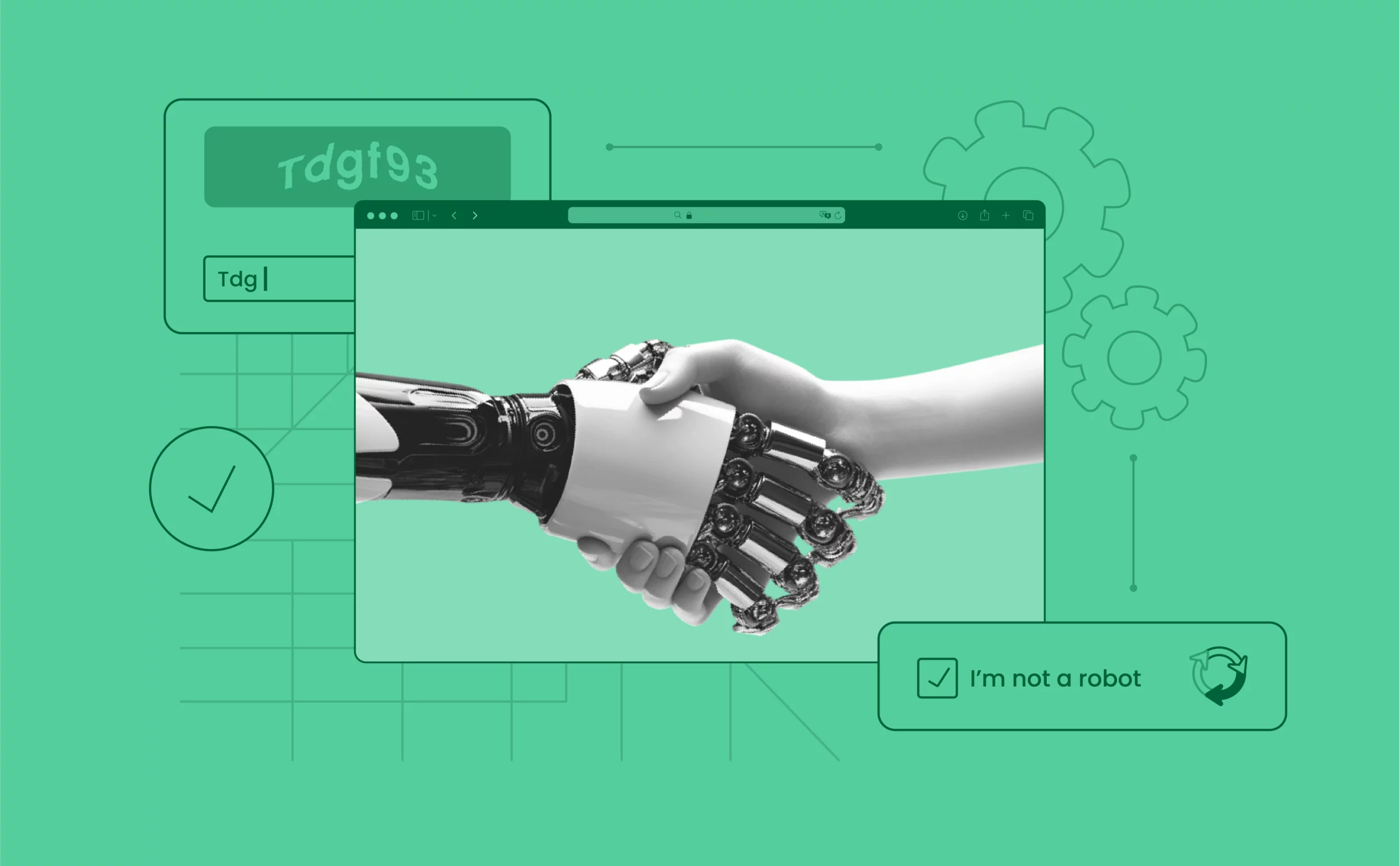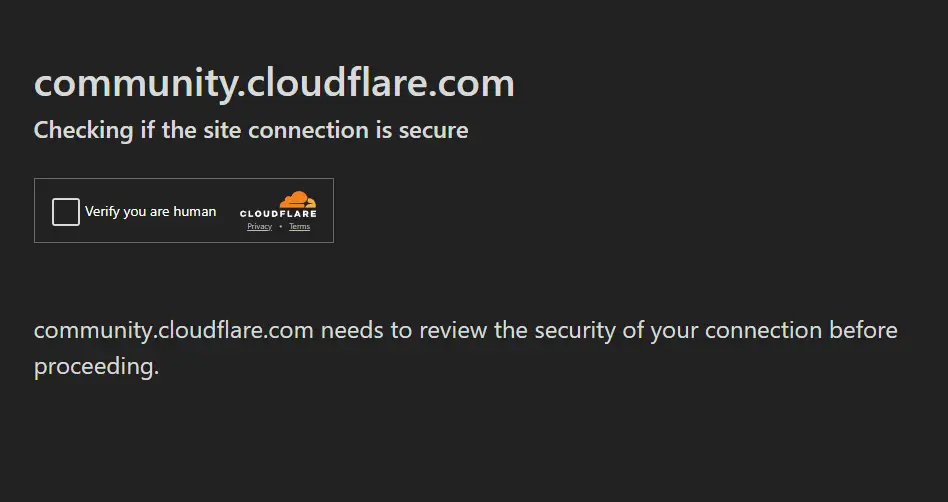
Cloudflare human verification: a comprehensive guide 2025
Cloudflare is a popular platform. It helps improve web performance and protects websites from bad traffic and DDoS attacks. One important part of Cloudflare’s security is its human verification checks. These checks help tell bots apart from real users. This enhances security, yet it also poses difficulties for developers and researchers utilizing automation tools such as Selenium.
This article will explore practical methods for bypassing Cloudflare’s human verification, all while staying within ethical guidelines.
What is Cloudflare human verification?
Cloudflare’s human verification is a security tool. It checks if a website visitor is a real person, not a bot. When you visit a website protected by Cloudflare, you may encounter a verification task. This could range from solving a CAPTCHA, ticking a box that says “I am not a robot,” or completing a small puzzle.
The purpose of this verification is simple: prevent bots from spamming, scraping content, or launching malicious attacks like DDoS.

Cloudflare uses advanced algorithms and behavior analysis to evaluate how you interact with a webpage. It identifies patterns that differentiate human browsing behavior from automated scripts. For example, it analyzes cursor movements, click patterns, typing speed, or page scrolling to determine whether genuine users or bots generate the activity.
These checks detect and block bots or suspicious behavior that could compromise website security or overwhelm servers.
Cloudflare preserves the integrity and performance of secured web pages by filtering traffic and allowing only legitimate interactions.
Challenges with bypassing Cloudflare
Before we dive into the methods, it’s important to understand the challenges you might face:
1. Dynamic Challenges
Cloudflare frequently updates its verification processes, actively monitoring and reacting to suspicious behavior. This approach requires methods to bypass its security measures to remain flexible and adapt quickly to changes.
2. Browser fingerprinting
Cloudflare relies on browser fingerprinting to collect data about your browser’s configuration, such as screen resolution, installed plugins, fonts, and other unique identifiers. Automation tools like Selenium often generate fingerprints that stand out, making detection more likely during automated workflows.
3. IP Reputation
Cloudflare evaluates IP addresses based on their activity and behavior. Using low-reputation IPs or public proxies often triggers verification checks because these IPs associate with suspicious or automated activities. To avoid triggering these checks, use high-quality, private proxies with strong reputations.
4. Frequent Failures
Automation tools like Selenium frequently encounter verification issues due to Cloudflare’s advanced detection methods. These failures disrupt workflows, causing delays and inefficiencies in tasks like web scraping and testing.
Methods to bypass Cloudflare human verification
Methods to Bypass Cloudflare Human Verification
Here are some practical methods for bypassing Cloudflare’s human verification—each with its own strengths and considerations.
1. Using verified proxies
Cloudflare pays close attention to the IP addresses sending requests. If you’re using suspicious or flagged IPs, it will trigger verification checks. To reduce the chances of this, you should use high-quality proxies. Socks5 or residential proxies with a solid reputation are your best bet.
Tip: Try rotating residential IPs to avoid getting flagged repeatedly.
2. Setting up Selenium with anti-detection techniques
Cloudflare can identify automation tools like Selenium by analyzing browser behavior. You’ll need to take a few steps to make your Selenium setup more human-like:
- Avoid default WebDriver configurations: Cloudflare can detect the default Selenium WebDriver by checking the browser fingerprint. Modify the WebDriver’s settings to mimic real user activity.
- Use Headless browsing with XVFB: XVFB (X virtual framebuffer) allows you to run headless browsers. This reduces resource usage and helps you bypass some of the more common human verification checks.
- Use extensions like Undetected_chromedriver: This extension can help mask your automation tools, reducing the chances of detection.
3. Emulate a real browser
To avoid detection, try to replicate real user behavior. This involves:
- User-agent switching: update your user-agent string to match popular browsers.
- Enable JavaScript: Ensure that your automation script executes JavaScript. This is essential because Cloudflare often checks whether JavaScript is enabled to determine whether a user is human.
Tip: Combine this with tools like Puppeteer for even more human-like interactions.
4. Using pre-warmed cookies
If you can, pre-warm cookies to bypass Cloudflare’s verification. This helps provide session continuity, making it harder for Cloudflare to flag your traffic.
How to use:
Start a real browser session to generate cookies.
Load these cookies into your automated browser for subsequent requests.
5. Leveraging Cloudflare human verification bypass APIs
Some third-party services provide APIs that can help you bypass Cloudflare’s verification checks. These APIs simulate real browser interactions to avoid detection.
Caution: Be sure to evaluate the credibility of these tools and understand the ethical implications before using them.
6. Optimizing ChromeDriver for Cloudflare
If you’re using ChromeDriver for automation, there are several tweaks you can make:
Disable WebDriver flag: Use the –disable-blink-features=AutomationControlled flag to hide the fact that you’re using a WebDriver.
Inject custom scripts: You can modify Cloudflare’s JavaScript challenges with custom scripts to simulate real user actions.
7. How to remove Cloudflare from Chrome
If Cloudflare’s verification gets in the way of your browsing experience, consider the following:
Disable any conflicting extensions that might be altering your browser’s behavior.
Use a VPN with high-quality IP addresses to avoid triggering verification checks.
Ethical considerations and best practices
Bypassing Cloudflare should only be done for legitimate purposes, such as testing website security or conducting research. Unauthorized use of these methods to scrape or attack websites is unethical and may result in legal consequences.
FAQ
- What causes Cloudflare human verification failures?
Failure often results from suspicious behavior, such as:
- Using outdated browsers.
- Browsing with flagged IP addresses.
- Accessing sensitive URLs repeatedly.
- Can I bypass Cloudflare without a proxy?
Yes, but it’s challenging. A combination of real browser emulation, cookie handling, and anti-detection techniques is required.
- What is XVFB in the context of Cloudflare?
XVFB is a virtual framebuffer that allows headless browsing. It’s used to execute Selenium scripts without displaying a GUI, reducing the likelihood of detection.
Conclusion
To bypass Cloudflare’s human verification checks, use a combination of technical strategies—verified proxies, fine-tuned Selenium configurations, and realistic browser emulation. These approaches work effectively when applied responsibly and align with legal standards.
This guide provides insights to address issues like “Cloudflare verify you are human Selenium” errors or human verification failures. Apply this knowledge to streamline your automation processes while maintaining legitimate and secure online interactions.